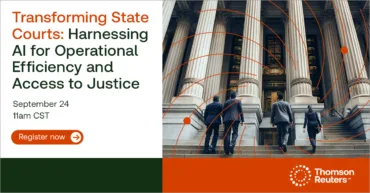On January 23, the U.S. Government Accountability Office (GAO) released a report stating that more than $60 billion may have been lost in fraudulent unemployment insurance (UI) benefits during the Covid-19 pandemic.
This wasn’t exactly breaking news for state agencies overseeing UI benefits. Evidence of fraud during the pandemic has been reported on for some time. But the GAO’s massive figure points to an ongoing headache those agencies are still having to handle. It also alludes to a growing problem: the increasing sophistication of cybercriminals establishing phony UI claims or making off with people’s rightful benefits.
If you’re involved with managing your state’s UI benefits program, your agency is always focused on reducing fraudulent claims – and the time, struggle, and stress that goes along with that effort. What you’re likely to need is a digital solution that can reduce both fraud and overwork.
How big a problem?
Why is the problem of UI fraud so big? After all, most parts of the country are experiencing an extremely tight job market. The number of initial jobless claims has been at lows comparable to levels before the pandemic hit.
Recently, claims have started to climb. The advance seasonally adjusted insured unemployment rate was 1.2 percent for the week ending January 14, an increase of 0.1% from the previous week’s unrevised rate. Meanwhile, the advance number for seasonally adjusted insured unemployment during the week ending January 14 was 1,675,000. That’s down from the previous year, but up 20,000 from the previous week.
But even with relatively low UI benefits numbers, managing the volume of claims still remains a daunting task.
The secretive nature of fraudulent activity makes it difficult to get precise data on the size of the UI fraud problem. In another report it released in January, the GAO noted that “when looking at known fraudulent activity, the Department of Labor (DOL) reported at least $4.3 billion based on formal determinations of fraud by states. Another $45 billion in UI applications was flagged by the DOL’s OIG [Office of Inspector General] as potential fraud.” The DOL estimates that there was about $8.5 billion in UI fraud in 2021 – and that’s not counting the additional Covid-related payments. “If the fraud rate found for regular UI applied across all UI programs during the pandemic, it would suggest at least $60 billion in fraudulent UI payments,” the GAO notes.
Another approximate gauge of fraud the DOL tracks is the “improper payment rate.” According to the department’s estimates for the 2022 reporting period, the UI program had an improper payment rate of 21.52% nationwide. Many states have much higher levels. Florida, for instance, has posted a nearly 40% improper payment rate over the last three years.
The pandemic may have peaked, but fraud remains virulent. According to the Internal Revenue Service, state agencies have “experienced a surge” in fraudulent UI claims “filed by organized crime rings using stolen identities.” These fraudsters, which operate across multiple states, are using the purloined personal information to access people’s UI accounts. In many cases, the rightful recipients of these benefits aren’t aware of this “hijacking” until they realize they aren’t receiving them.
A better way
Of course, the best strategy for handling the problem is stopping fraudulent claims before they’re paid. That way, your agency’s people don’t need to go through the additional struggle of trying to recover the funds after the fact. But as you most likely well know, weeding out fraudulent UI claims is a major contributor to your agency’s backlog.
You’re also probably well aware of the stresses your people are facing. Those difficulties include verifying identities while being able to access only outdated and sometimes inconsistent data. They might be having to work with manual processes, making an already complicated situation even worse. All this puts them at a disadvantage against tech-savvy cyber-crooks.
What would make it easier for them, and for you? Streamlining the investigation processes and removing as many verification challenges as possible can help your agency keep up with UI claims. That would allow your people to provide better service to those who need those benefits, and that can lower the risk of burnout.
Many state agencies overseeing UI claims and benefits are exploring technology solutions in their battle against fraud. One set of digital weapons designed to provide additional firepower is Thomson Reuters Risk & Fraud Solutions. This suite of fraud and risk identification and prevention tools has been developed to address the complex and multiple challenges relating to financial fraud, waste, and abuse in both the public and private sectors.
You can learn more about how Thomson Reuters Risk & Fraud Solutions can help unburden your agency, your staff, and your state’s UI recipients here.













